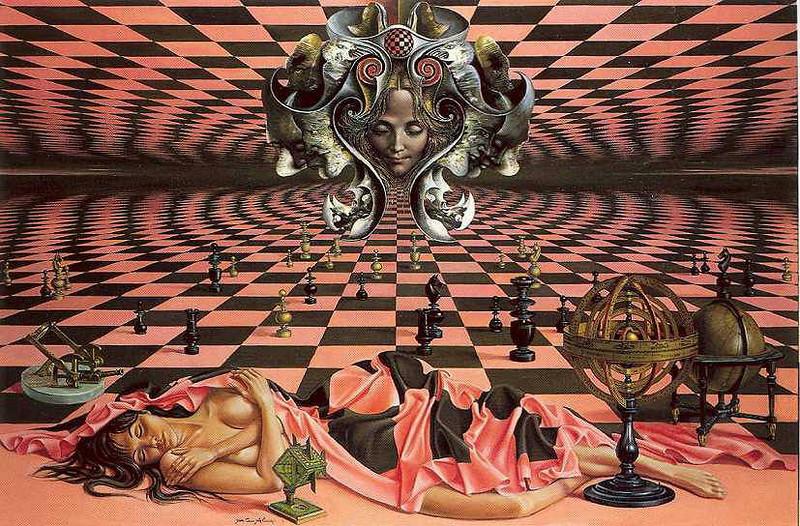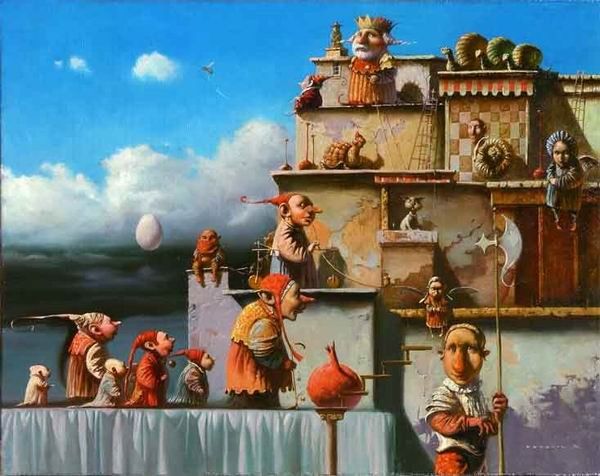
New-Age Challenges Susan Polgar
COMPARING A MODERN VS CONVENTIONAL EARLY CHESS LEARNING METHOD. NEW-AGE vs STONE AGE
In 1929, Aron Nimzovich strongly asserted that the early teaching method was "fundamentally flawed." For nearly ninety years his idea hasn't attracted anyone's attention in the chess community. Strange. Either Nimzovich's idea hasn't been noticed at all, or if it has, there could be two possible explanations for ignoring it: 1) either nobody has gotten the idea and what the great chess thinker really wanted to communicate to us, or 2) the idea was a flop and as such it didn't deserve any attention at all.
I've been researching his idea for about ten years now, since soon after I saw this game in an after-school program between two boys who had been in chess for half a year at the time: 1.e4 d5 2.Bd3 Bg4 3.exd5 etc.
I felt something real big seemed rotten in the Chess Kingdom, Department of early education. Such level of chess blindness shocked me and actually set on my way to try to find a plausible explanation for it. After coming across Nimzovich's bold statement above and studying the matter for a couple years (the complex system theory, cognitive elements of learning, etc.) I finally came to realization that Nimzovich was right ― the early teaching had been the main culprit for keeping an overwhelming number of chess entrants down, never letting them go beyond the moves and out of Chess Level 1.
Nimzovich's conclusion from his 1929 article "How I became a Grandmasters" that showing the beginner the moves first has proved, though a bit controversial, to be right on the target ― we should start teaching relationships between pieces before the moves right from the Chess Moment One.
My totally unconventional, Relationship-based early training method has been explained in three posts starting here. Today I would like us to see together how the Modern contrasts with the Traditional early teaching approach.
THE TRADITIONAL
I am taking Chess for Kids! GM Susan Polgar Teaches Chess The Easy Way for comparison in order to see how the two stack up in terms of what they provide an absolute beginner with: basic concepts, chess rules, fun facts, etc.
Why was Polgar's method picked for comparison? It doesn't differ much, methodology-wise, from most other approaches (in primer books, DVDs, apps, one-on-one). On the other hand, Susan Polgar is a former World champion, chess teacher, coach, writer and promoter. She and her two younger sisters proved to be successes in an experiment their Father conducted to show that Geniuses are made, not born.
So Susan's authoritativeness gives substantial weight to the learning method she developed for a beginner.

Allan Douglass Mainds (1881 – 1945, British, Scottish) A Lesson in Chess 1931-33
The Polgar's DVD I have found on YouTube under the above name is 15:35 minutes long. As she explains, her DVDs is to "help you learn the wonderful game of chess. Once you finish watching the DVD you will know more about chess than you ever knew before and be on your way to becoming a chess player yourself."
Chapter 1. Chessboard
We learn it has 64 squares, each square has its name and they sit on different sides (Q-side, K-side, White's and Black's territory). There are lines on the board (a-h), ranks (1-8) and diagonals. The notion of Center.
Chapter 2. Chess pieces
Each has special shape, name, nickname, value, special moves and powers. In the StatCenter we are informed about each piece, Rook first: it has 5 points, its nickname is Tower, or Castle, moves any distance in a straight line; the number of pieces: 2 (the same thing follows then for other pieces).
At the end of each chapter Polgar included a quiz to help you solidify the important rules of chess and the fun things you can and cannot do.
At the end of DVD Susan gives a piece of advice, "Now you know about your pieces, what they can and cannot do. You are advised by Susan that you have to play with your pieces, move them around, get to know them, and how they can work for you."
To be honest, I don't see how you can play with the mere knowledge of the board, what chessmen's nicknames are and how they move.
THE MODERN
The alternative method begins with the concept of striking power pieces possess and how this power is exchanged as pieces establish relations; the moves are subordinate to power and only serve chessmen to get into contact with (=attack) enemy pieces.
The above concept of power structure/relationships gives purpose and meaning early in the learning process. It was demonstrated for only Rook and Bishop, so as to let the beginner start playing as soon as possible without unnecessary and distracting details. My original intention was to design the most straightforward method to get you play in 10 minutes (some primer books have 50 pages of chess moves and rules). The mini-game that served the purpose was 2B vs 2R, simple but very effective learning trick.

Emile Vloors (1871 – 1952, Belgian) Le jeu d'échecs
THE VERDICT
So how do you think the two approaches stack up?
In Polgar's course there is no single chess CONCEPT explained whatsoever. There are the moves, some rules, fun facts and trivia. The beginner still is not equipped to start playing. The only thing they can do is to play with pieces and move them around (as advised by Susan), in the same way girls play with their dolls.
How about the modern? The freshman has a chance to practice all these:
1. Three out of four basic piece relationships
2. Early tactics with double attack, and geometrical motif
3. Two ways of how to parry an attack: fleeing, capturing
4. Start building up (in its embryonic state) the blank slate mindset with
- "Always look for targets"
- Getting initial sense for forcing moves and
- Doing sanity check
So, which method appears to be getting the upper hand, the traditional, or the modern?
What do you think?
